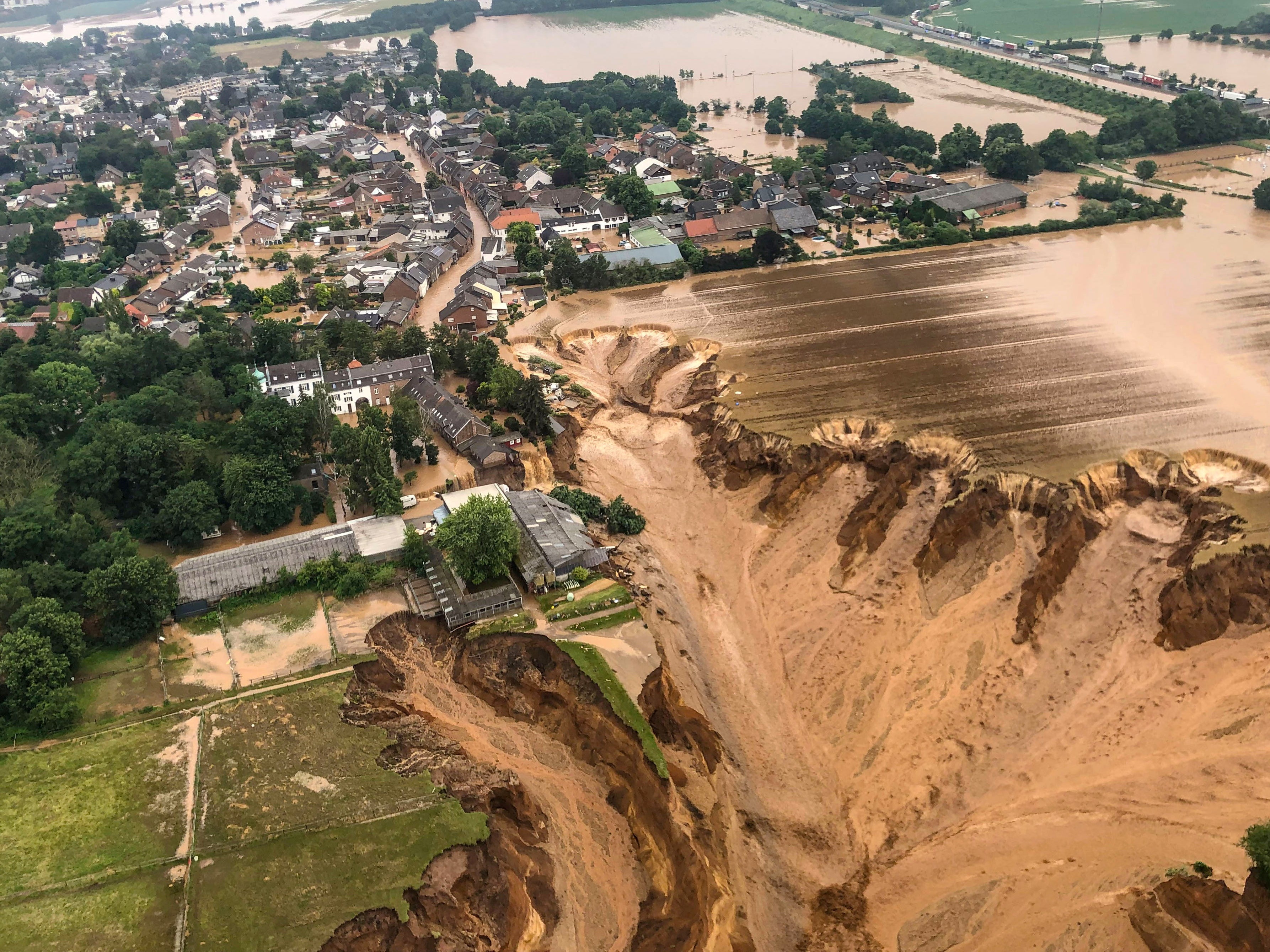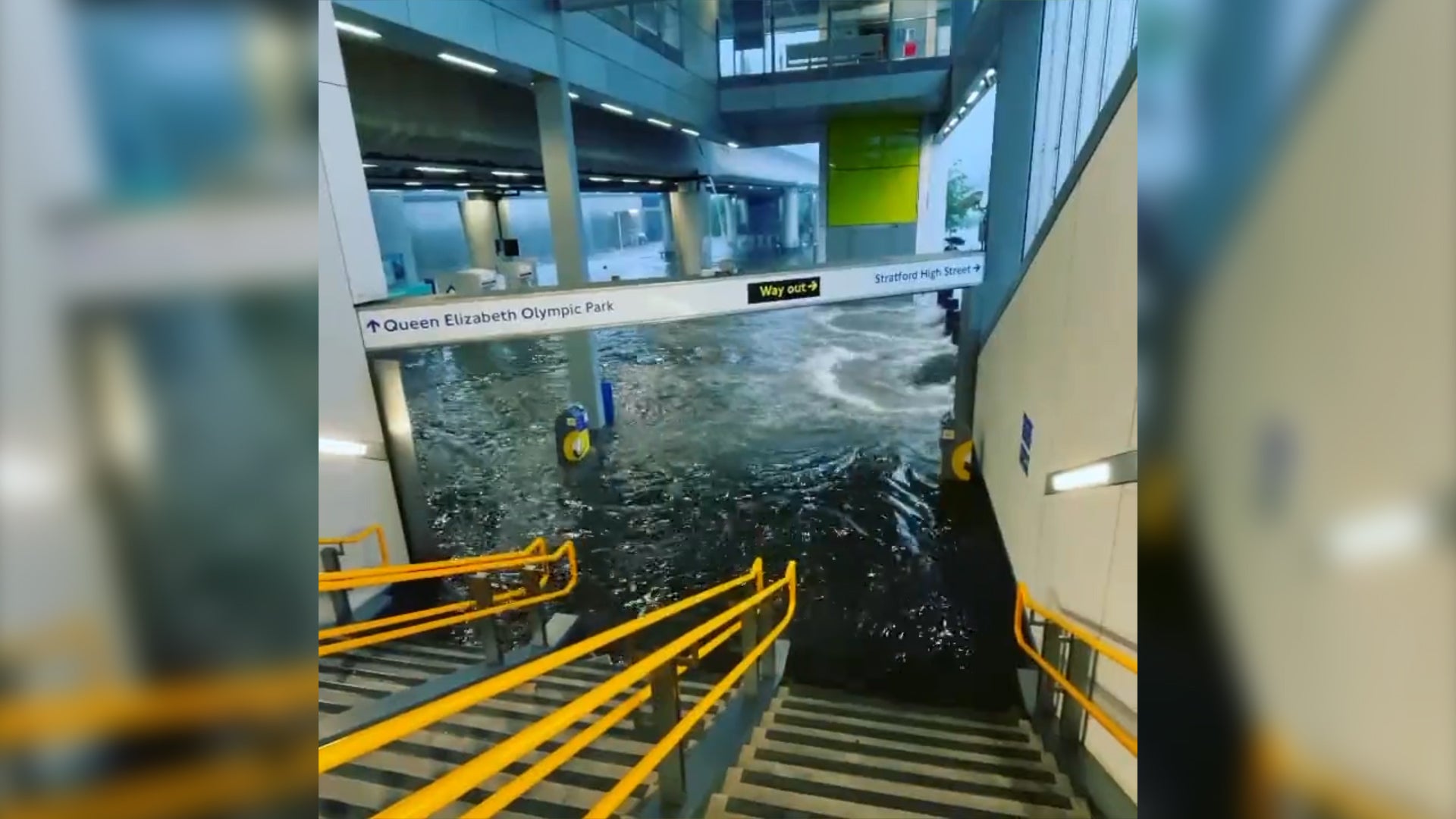Warning UK could ‘easily’ see catastrophic floods on scale of Germany’s deadly deluge
Exclusive: Devastating flooding on scale seen in Europe last year ‘absolutely conceivable’ in Britain, say modellers
Your support helps us to tell the story
From reproductive rights to climate change to Big Tech, The Independent is on the ground when the story is developing. Whether it's investigating the financials of Elon Musk's pro-Trump PAC or producing our latest documentary, 'The A Word', which shines a light on the American women fighting for reproductive rights, we know how important it is to parse out the facts from the messaging.
At such a critical moment in US history, we need reporters on the ground. Your donation allows us to keep sending journalists to speak to both sides of the story.
The Independent is trusted by Americans across the entire political spectrum. And unlike many other quality news outlets, we choose not to lock Americans out of our reporting and analysis with paywalls. We believe quality journalism should be available to everyone, paid for by those who can afford it.
Your support makes all the difference.Devastating floods on a similar scale to those seen in Germany in 2021 are “absolutely conceivable” in the UK, experts have warned. Factors ranging from the summer’s drought conditions to erratic weather patterns caused by the climate crisis rachet up the risk, they claim.
The warning comes after Storm Claudio battered parts of the UK this week, prompting a number of flood warnings and alerts to be issued.

Parts of London woke up to flooded roads and transport problems after the capital experienced half a month’s rainfall in one night, with the Met Office warning of further heavy rain across parts of the country for the next two weeks.
The latest estimates used by insurance companies in Britain indicate that around 5.2 million homes and businesses are at risk of flooding, and that number is rising as global heating raises the likelihood of extreme weather.
By the middle of this century, the cost of a 200-year flood could rise by 42 per cent to £5bn, if there is no action to reduce emissions, according to JBA Risk, which provides flood modelling services to insurance companies.
It is impossible to accurately predict flood disasters or be certain of how and where they might affect the country. The London floods – which swamped Tube stations, homes and businesses in July 2021, causing drainage systems to fail and inundating properties with raw sewage – were part of the same weather system that affected Germany and Belgium days later.
No one was killed in the UK, but as record levels of rain continued to fall across Europe, catastrophic flooding led to landslides, tore through towns, destroyed buildings and vehicles, cut off roads and railways, and left 196 people dead in Germany. In Belgium, 43 people were killed.

Germany’s chancellor at the time, Angela Merkel, described the extent and intensity of the flooding as “terrifying”, and told reporters: “I can almost say that the German language doesn’t have words for the destruction that’s been wreaked.”
Andy Bord, chief executive of the UK’s Flood Re initiative, a joint scheme between insurance companies and the government which helps make flood insurance affordable, told The Independent: “We were incredibly lucky to escape something similar in this country, and it is absolutely conceivable that the same thing could happen here.
“The recent heatwave in the UK and incidents of flooding that followed straight after are a reminder of the more extreme weather we can expect as the overall climate gets wetter and warmer.
“Had the weather patterns been slightly different in the UK, we easily could have seen floods of the same scale as those in Germany.”
The warning comes as world leaders gather this weekend in Egypt for the Cop27 climate conference.
The UK was hit by a record-breaking heatwave this summer, and a continuing drought that could last into next year, according to the Environment Agency.

The greatest risk to properties is not from sea or river flooding, but from flooding caused by heavy rain – known as pluvial flooding.
Mr Bord said: “Rainwater flooding is regarded as a greater threat than both river – fluvial flooding – and coastal flooding combined. For instance, the Environment Agency estimates 3 million properties in England are susceptible to pluvial flooding – compared to 2.7 million properties that are at risk of fluvial or coastal flooding.”
Rock-hard ground following months of dry weather is almost impenetrable to water, resulting in rapid surface-water run-off, posing a risk to properties.
Meanwhile, warming temperatures, also due to the climate crisis, mean that the atmosphere can hold more water – resulting in more intense and prolonged rainstorms.
A similar scenario was the cause of deadly flooding in Pakistan in September, where a severe heatwave was followed by torrential monsoons, the effects of which were compounded by water from rapidly melting glaciers. Almost 1,600 people are known to have been killed in the floods, which have left around a third of the country under water.
Insurers in the UK are now concerned that unbridled greenhouse gas emissions, the higher likelihood of heatwaves and droughts, and the growing risk of sudden extreme rainfall mean that greater action must be taken to counter the increasing danger.

JBA Risk’s Karen Whittingham told The Independent that while the cost of a 200-year flood event could escalate by 42 per cent by the middle of the century, “if there is no action to reduce emissions, the UK could see a hike of up to 87 per cent in average annual losses to residential properties”.
She added: “There could also be a 120 per cent increase in the cost of surface-water floods, particularly in the south and east of the UK, under a [worst case] scenario.”
Mr Bord told The Independent that Flood Re is calling on the government to introduce flood performance certificates, “which will provide understanding and reassurance of the flood risk posed to properties and steps that can be taken to mitigate them”.

He added: “Along with building and maintaining flood defences, we also encourage householders to consider property flood resilience measures to protect the property and recover more quickly in the event of a flood.”
Malcolm Tarling, from the Association of British Insurers, told The Independent: “The rising flood risk in the UK is probably the most demonstrable indicator of our changing weather patterns.
“From an insurance perspective, it’s something that’s concerned us for some time. All the indicators suggest it’s something that’s getting worse.
“It may seem odd that we’re talking about this just after what will be the driest summer in most people’s memories, but the ground is so bone-dry that [when we get rain] the water has nowhere to go.”
Speaking about the impact of government spending on flood alleviation, he said: “Flood defence maintenance is very cost-effective – for every £1 increase in maintenance spending, almost £7 is saved in capital spending on defences.”
An Environment Agency spokesperson told The Independent: “We are already seeing the impacts of climate change through wetter winters and drier summers, and the Environment Agency is working to help communities become more resilient to extreme weather and rising sea levels.
“Our third Climate Adaptation Report made it clear that we must all play our part in preparing for climate change. Within the EA, we are delivering on a record £5.2bn investment in flood and coastal defences between 2021 and 2027.”




Join our commenting forum
Join thought-provoking conversations, follow other Independent readers and see their replies
Comments